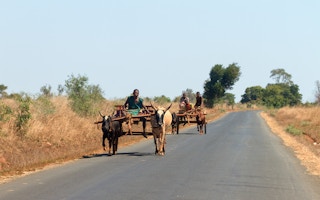The world’s population is expected to number more than 9 billion people by 2050, and to feed them agriculture will have to grow by 60 per cent. It’s an expansion that can only be fuelled by investment – to the tune of $83 billion.
Growth generated by agriculture is up to four times more effective at reducing poverty than growth in other sectors. Approximately 20 per cent of the world’s population live in extreme poverty, earning less than $1.25 a day. It is clear that we need to change the way we invest in agriculture and food production, to ensure that we’re benefiting those who need it most. This means not just more investment but better and more targeted investments.
The Committee on World Food Security (CFS) has been looking at ways to make investment contribute to food security and nutrition, and has committed to developing a set of principles through a broad and inclusive consultation and negotiation process. CFS is a multistakeholder body that is open to all member countries of the United Nations, as well as other UN bodies, civil-society organizations, international research networks, international financial institutions, private-sector organizations and philanthropic organizations – all of whom are able to participate in debates and contribute to decisions and outputs.
The CFS endorsed the Principles for Responsible Investment in Agriculture and Food Systems in October 2014 – the first global consensus on defining how investment in agriculture and food systems can do the most good. The principles outline how investment should address development challenges such as climate change, gender equality, health and welfare, youth engagement and access to water.
They also cover all types of investment in agriculture and food systems, whether public, private, large, small, and in both the production and processing spheres. They provide a framework that can be used in developing national policies, regulations and programmes; corporate social responsibility policies and schemes; and individual agreements or contracts. The principles also outline the roles of investors, whether governments or businesses, and smallholders. (Small farmers invest more in primary agricultural production than any other group.)
A broader approach
“
Transforming agriculture and food systems means using less land, and getting better results from resources and inputs. It also means engaging young people. Approximately 90 per cent of the world’s youth live in developing countries, where agriculture employs as much as 60 per cent of the labour force.
So what do the principles mean and how can we all work together to ensure they support food security and nutrition on the ground? The people responsible for translating global policy into action at the country level need to think through practical steps at all stages of the food system. For example, they should move away from the opinion that “investment” means buying land, and think more broadly about investment in agricultural knowledge and technology, something that could significantly reduce poverty.
Transforming agriculture and food systems means using less land, and getting better results from resources and inputs. It also means engaging young people. Approximately 90 per cent of the world’s youth live in developing countries, where agriculture employs as much as 60 per cent of the labour force. But the majority do not currently see agriculture as a viable career path, given the risks, hard work and low income they’ve seen generations before them face. How can we attract young people to agriculture and help them become drivers of change?
One key element – one that will also contribute to the UN’s Sustainable Development Goals – will be to harness the market potential in agriculture and food systems to spread greater value through the supply chain. Today’s consumers demand responsible investment practices, and want to know how and where food is produced; they are even willing to pay higher prices for products that meet these standards. Companies are starting to recognize that longer-term success depends on positive changes in rural communities.
Why we should start small
The estimated 500 million smallholders worldwide are an opportunity for companies to diversify their portfolio of suppliers and reduce their carbon footprint. This also creates opportunities for the smallholders, who can better connect with local and global markets. Small farmers account for more than 95 per cent of agricultural holdings and feed up to 80 per cent of the population in Asia and sub-Saharan Africa. Partnering with them is essential if we are to improve food security and nutrition.
While progress has been made, there is still much to do. More than 1 billion people are living in extreme poverty, and at least 2 billion are malnourished. In developing countries, the Sustainable Development Goals will have to contend with an annual investment deficit of $2.5 trillion. The business case and the humanitarian case for investing in responsible agriculture and food systems is there; now what we need is engagement from all sectors and result-oriented action on the ground.
Gerda Verburg is chair, Committee on World Food Security. This post is republished from the World Economic Forum blog.











